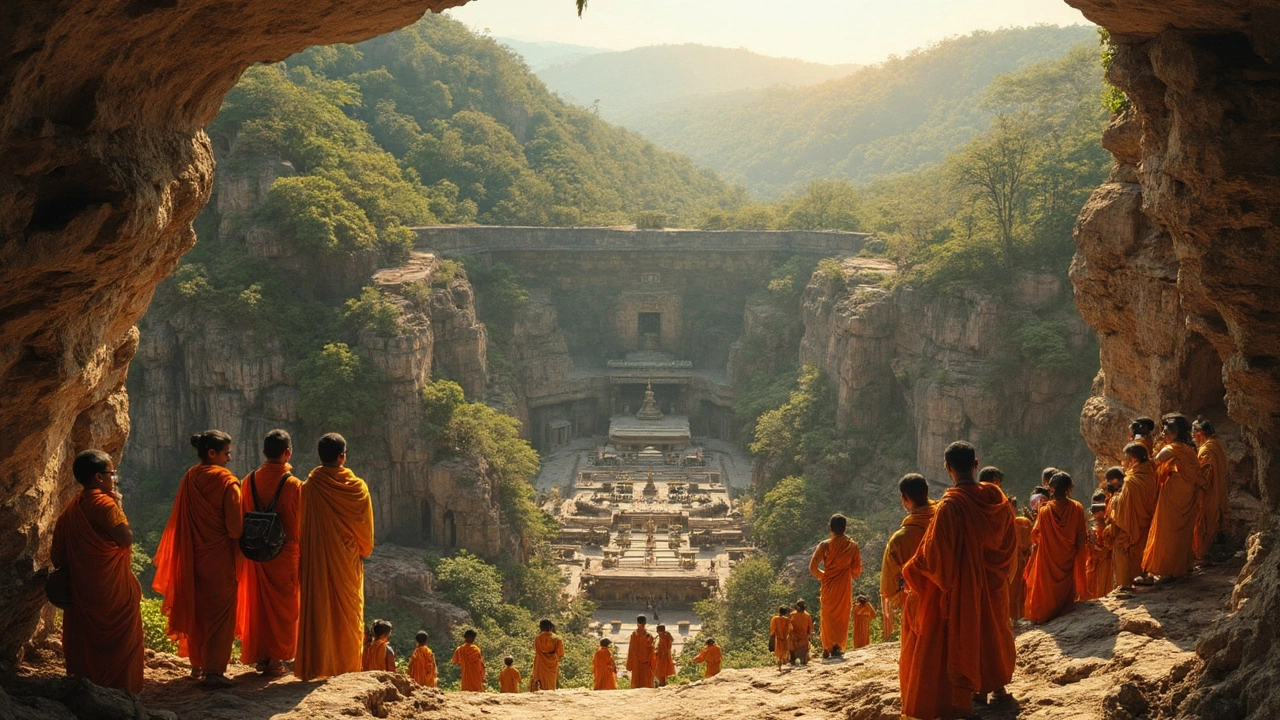
First Indian Art Masterpiece: Discover the Ajanta Caves’ Timeless Brilliance
Uncover how the Ajanta Caves became the first masterpiece of Indian art, why they still captivate the world, and what makes their history and detail unforgettable.
When we talk about Indian art history, the evolving visual and performative traditions of the Indian subcontinent, spanning over 5,000 years. Also known as South Asian art heritage, it's not locked in museums—it's in temple carvings, village dances, and the blue skin of gods still worshipped today. This isn't just about ancient relics. It's about how symbols, colors, and rhythms from thousands of years ago still shape how people see the divine, express emotion, and connect with their roots.
Take the blue skin of Hindu deities, a visual code in Indian art representing infinity, cosmic power, and transcendence. It’s not an artistic choice—it’s a spiritual statement. Krishna, Shiva, and Vishnu aren’t blue because artists liked the color. They’re blue because ancient texts describe them as boundless, beyond human limits. This same logic shows up in Carnatic classical music, a devotional musical system from South India that uses complex rhythms and improvisation to mirror spiritual states. Unlike its North Indian cousin, Hindustani music, Carnatic music grew in temple courtyards, where every note was meant to elevate the soul, not just entertain. And then there’s Tamil folklore, the oral and performative traditions of Tamil Nadu that include masked dances, ritual songs, and water spirits like the Jalpari. These aren’t fairy tales—they’re living practices passed down through generations, often performed during harvests, monsoons, or temple festivals.
Indian art history doesn’t stop at painting or sculpture. It’s in the rhythm of bol banao, a form of nonsense singing in rural folk music that uses syllables to create emotional percussion without words. It’s in the way sweets are gifted during Diwali—not just as treats, but as symbols of prosperity rooted in ancient rituals. It’s in the quiet tension between traditions like yoga and modern religious views, where spiritual movement meets doctrinal boundaries. And it’s in how global myths, like the Greek Aphrodite, get mistaken for Indian goddesses like Lakshmi, revealing how easily cultures blend in the imagination—even when their meanings are worlds apart.
What you’ll find in the posts below isn’t a dry timeline of art movements. It’s a collection of real stories—why blue gods matter, how folk music carries memory, what happens when ancient practices meet modern rules, and how a single festival like Navratri can stretch across 15 days with different meanings in every village. These aren’t just facts. They’re threads in a much larger fabric—one that still moves, sings, and breathes today.

Uncover how the Ajanta Caves became the first masterpiece of Indian art, why they still captivate the world, and what makes their history and detail unforgettable.